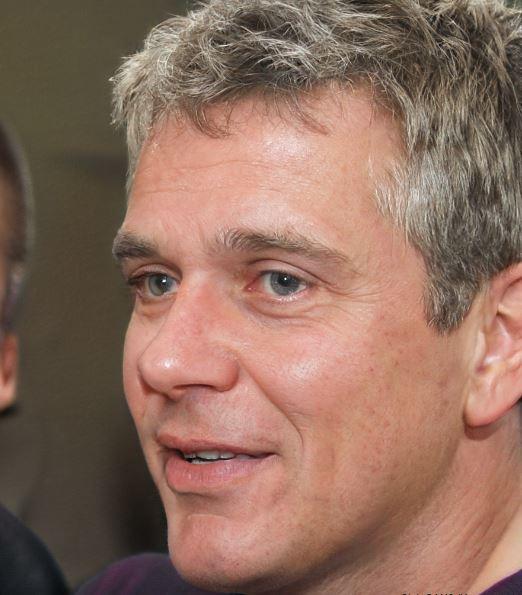Brush your Siberian Husky’s coat twice a week and bathe them every few months. Trim their nails and clean their ears regularly.
Wondering about How to Groom a Siberian Husky? Siberian Huskies have a thick double coat that requires consistent grooming. Regular brushing helps manage shedding and prevents matting. Use a slicker brush or an undercoat rake to remove loose fur effectively. Bathing every few months keeps their coat clean without stripping essential oils.
Trim their nails to avoid overgrowth and discomfort. Clean their ears with a vet-recommended solution to prevent infections. Consistent grooming not only keeps your Husky looking great but also promotes their overall health. Start grooming routines early to get them accustomed to the process. Always reward your Husky with treats and praise to make grooming a positive experience.
Understanding The Husky Coat
Siberian Huskies have a beautiful, unique coat that requires special care. Understanding their coat is key to effective grooming. Huskies have a double coat, consisting of a topcoat and an undercoat. Each layer plays an important role in their health and comfort. This guide will help you understand these layers and how to care for them.
Topcoat
The topcoat of a Siberian Husky is made of guard hairs. These hairs are long, straight, and help protect your Husky from dirt and debris. The topcoat also repels water, keeping the undercoat dry. Regular brushing is essential to maintain the topcoat.
Key points about the topcoat:
- Long and straight guard hairs
- Protects from dirt and debris
- Repels water
To keep the topcoat healthy:
- Brush your Husky’s topcoat at least twice a week.
- Use a slicker brush to remove loose hairs.
- Check for tangles and mats, especially behind the ears and legs.
Regular brushing keeps the topcoat shiny and free from mats. It also helps distribute natural oils, which are crucial for a healthy coat. Remember, a well-maintained topcoat can reduce shedding and keep your home cleaner.
Undercoat
The undercoat is the soft, dense layer beneath the topcoat. It provides insulation, keeping your Husky warm in cold weather and cool in hot weather. This layer requires special attention, especially during shedding seasons.
Key points about the undercoat:
- Soft and dense
- Provides insulation
- Requires regular care, especially during shedding
To maintain the undercoat:
- Brush daily during the shedding season.
- Use an undercoat rake to remove loose fur.
- Ensure the undercoat is dry after baths to prevent mildew.
Regular grooming of the undercoat helps prevent matting and skin issues. It also keeps your Husky comfortable during temperature changes. A healthy undercoat is vital for your Husky’s overall well-being.
Brushing Basics
Grooming a Siberian Husky can be a rewarding experience. These beautiful dogs have a thick double coat that requires regular brushing. Brushing Basics are essential to keep their fur healthy and reduce shedding. Let’s explore the tools and techniques needed to groom your Husky effectively.
Undercoat Rake
An undercoat rake is a crucial tool for a Siberian Husky. This tool helps remove loose fur from the undercoat without damaging the topcoat. Follow these steps to use an undercoat rake:
- Start by brushing in the direction of hair growth.
- Gently pull the rake through the coat to catch loose fur.
- Work in small sections to ensure thorough grooming.
Tip: Use the undercoat rake once a week to keep shedding under control. This is especially important during shedding seasons.
Here’s a quick comparison of different undercoat rakes:
| Brand | Features | Price |
| Brand A | Stainless steel teeth, ergonomic handle | $20 |
| Brand B | Adjustable teeth, non-slip grip | $25 |
Slicker Brush
The slicker brush is perfect for removing mats and tangles. This brush has fine, short wires close together on a flat surface. Here’s how to use it:
- Brush in the direction of the hair growth.
- Use gentle strokes to avoid hurting the dog’s skin.
- Focus on areas prone to matting, like the belly and behind the ears.
Tip: Use the slicker brush after the undercoat rake to smooth out the coat.
Benefits of using a slicker brush:
- Reduces tangles and mats.
- Promotes healthy skin by distributing natural oils.
- Removes loose fur effectively.
Note: Always clean the brush after each use to maintain its effectiveness.
Metal Comb
A metal comb is great for finishing touches. It helps to ensure no tangles are left behind. Use a metal comb by following these steps:
- Start from the head and move towards the tail.
- Comb through the fur gently to catch any remaining loose hairs.
- Use the wider teeth for larger areas and the finer teeth for delicate spots.
Tip: Use the metal comb after the slicker brush for a smooth and shiny coat.
Advantages of a metal comb:
- Great for detailed grooming.
- Helps find and remove small tangles.
- Can be used for both the undercoat and topcoat.
Note: Choose a comb with rounded teeth to avoid scratching your dog’s skin.
Gathering Necessary Supplies
Grooming a Siberian Husky requires the right tools and supplies. This breed has a double coat that needs regular maintenance. Before starting, gather all necessary supplies to make the process smooth and efficient. Proper preparation ensures a stress-free experience for both you and your dog.
Brushes And Combs
Different brushes serve different purposes. A slicker brush helps remove loose fur and tangles.
An undercoat rake reaches deep into the thick fur to get rid of the undercoat. A wide-tooth comb can help with the final touches, ensuring no knots remain.
Shampoo And Conditioner
Use a dog-specific shampoo to protect your Husky’s skin. Avoid human shampoos as they can irritate.
A good conditioner helps keep the coat soft and shiny. Choose products that are hypoallergenic and free from harsh chemicals.
Nail Clippers
Overgrown nails can cause discomfort for your dog. Use nail clippers designed for dogs. Make sure they are sharp and easy to handle. Always have styptic powder on hand to stop any accidental bleeding.
Ear Cleaning Supplies
Clean ears prevent infections. Use an ear cleaning solution made for dogs.
Cotton balls or pads can help wipe out dirt and wax. Avoid using cotton swabs which can push debris further into the ear canal.
Table Of Necessary Supplies
| Item | Purpose |
| Slicker Brush | Removes loose fur and tangles |
| Undercoat Rake | Reaches deep into the thick fur |
| Wide-tooth Comb | Ensures no knots remain |
| Dog Shampoo | Protects the skin |
| Conditioner | Keeps the coat soft and shiny |
| Nail Clippers | Trims overgrown nails |
| Ear Cleaning Solution | Prevents infections |
| Cotton Balls | Wipes out dirt and wax |
Grooming Table And Towels
A grooming table helps keep your Husky steady. It also saves your back from bending over.
Have a few towels ready to dry your dog after a bath. Absorbent towels speed up the drying process.
Treats And Toys
Grooming can be a bit stressful for your Husky. Treats and toys can serve as distractions and rewards. They make the grooming experience positive for your dog.
Brushing Techniques: From Topcoat To Undercoat
Grooming a Siberian Husky is essential to keep their coat healthy and beautiful. Their unique double coat requires special attention.
Brushing The Topcoat
The topcoat of a Siberian Husky is thick and water-resistant. Use a slicker brush to remove loose hair and dirt. Start from the neck and move towards the tail. Brush in the direction of hair growth to avoid damaging the coat.
Tools For Undercoat Care
The undercoat is where most shedding occurs. A de-shedding tool or an undercoat rake works best. These tools reach deep into the undercoat, removing loose fur effectively. This prevents matting and reduces shedding around your home.
Step-by-step Brushing Process
- Prepare your tools: Gather a slicker brush, de-shedding tool, and undercoat rake.
- Start with the topcoat: Use the slicker brush to remove surface debris and loose hair.
- Move to the undercoat: Switch to the de-shedding tool or undercoat rake. Work gently through the fur.
- Brush in sections: Divide the coat into manageable sections. This ensures thorough grooming.
- Check for mats: Pay attention to areas prone to matting, like behind the ears and under the legs.
Frequency Of Brushing
Regular brushing is crucial. Aim to brush your Husky at least twice a week. During shedding seasons, daily brushing helps manage the fur. Consistent grooming keeps your dog’s coat healthy and reduces hair around the house.
Benefits Of Proper Brushing
- Reduces shedding: Regular brushing removes loose fur, minimizing hair on furniture.
- Prevents matting: Grooming prevents mats and tangles, keeping the coat smooth.
- Promotes healthy skin: Brushing stimulates the skin, promoting healthy oil distribution.
- Strengthens the bond: Grooming time strengthens the bond between you and your Husky.
| Tool | Purpose |
| Slicker Brush | Removes surface debris and loose hair from the topcoat. |
| De-shedding Tool | Reaches deep into the undercoat to remove loose fur. |
| Undercoat Rake | Effective for detangling and preventing mats in the undercoat. |
Keeping Your Husky Clean
Grooming a Siberian Husky is essential to keep them healthy and happy. Keeping your Husky clean is a crucial part of this process. Regular cleaning of their ears, eyes, and teeth ensures they stay free from infections and other health issues. Let’s dive into the specifics of how to keep your Husky clean.
Cleaning Ears And Eyes
Cleaning your Husky’s ears and eyes regularly is vital. Dirty ears can lead to infections, and gunk in the eyes can cause irritation.
Steps to Clean Your Husky’s Ears:
- Check ears weekly for dirt and wax.
- Use a cotton ball with a vet-approved ear cleaner.
- Gently wipe the outer part of the ear.
- Never insert anything deep into the ear canal.
Regular ear cleaning helps prevent infections and keeps your Husky comfortable. If you notice any bad odor, redness, or swelling, contact your vet.
Steps to Clean Your Husky’s Eyes:
- Check eyes daily for discharge or redness.
- Use a damp, soft cloth to wipe away gunk.
- Use separate cloths for each eye to avoid cross-contamination.
Consistent eye cleaning helps prevent eye infections and keeps their vision clear. If you see any persistent discharge or irritation, consult your vet.
Brushing Teeth
Brushing your Husky’s teeth is crucial for their dental health. Regular brushing prevents tartar build-up and keeps bad breath at bay.
Steps to Brush Your Husky’s Teeth:
- Use a dog-specific toothbrush and toothpaste.
- Start by letting your Husky taste the toothpaste.
- Gently lift their lip to expose the teeth.
- Brush in circular motions, focusing on the gum line.
- Brush for at least 2 minutes.
Brushing your Husky’s teeth at least 2-3 times a week is recommended. This practice helps maintain their oral health and prevents dental diseases.
Here’s a table summarizing the essential grooming tools:
| Tool | Purpose |
| Ear Cleaner | Clean and prevent ear infections |
| Soft Cloth | Wipe eyes clean |
| Dog Toothbrush | Brush teeth effectively |
| Dog Toothpaste | Prevent tartar and bad breath |
Keeping your Husky clean ensures their overall well-being and happiness. Regular grooming makes them feel loved and cared for.
Maintaining A Healthy Coat
Grooming a Siberian Husky requires dedication and understanding of their unique coat. Maintaining a healthy coat is vital to keep your Husky looking its best and ensure its overall health.
The double coat of a Siberian Husky needs regular care to prevent matting, reduce shedding, and control skin issues. Here’s how you can maintain a healthy coat for your Siberian Husky.
Maintaining Paw Hygiene
Keeping your Siberian Husky’s paws clean is crucial for their health and comfort. Dirty paws can lead to infections and discomfort. Here’s how you can maintain paw hygiene:
- Regular Inspection: Check your Husky’s paws weekly for cuts, cracks, or foreign objects.
- Trimming the Fur: Trim the fur between their paw pads to prevent matting and debris buildup.
- Cleaning: Wash their paws with warm water and mild soap after outdoor activities.
During winter, pay extra attention to their paws:
| Issue | Solution |
| Salt and Chemicals | Rinse paws after walks to remove salt and chemicals. |
| Ice Build-Up | Check for ice between toes and remove gently. |
| Dryness | Apply paw balm to prevent cracking and dryness. |
Here are some additional tips for paw hygiene:
- Use a soft towel to dry their paws after washing.
- Apply antiseptic to minor cuts and scratches.
- Consider dog booties for extreme weather conditions.
Maintaining paw hygiene not only ensures comfort but also keeps your Husky active and happy.
Dealing With Excessive Shedding
Grooming a Siberian Husky can be a delightful experience if done right. One of the primary concerns for Husky owners is dealing with excessive shedding. These beautiful dogs have a thick double coat that sheds heavily, especially during seasonal changes.
Proper grooming techniques can help manage this shedding and keep your Husky looking its best. Below, we explore some effective methods to handle excessive shedding in Siberian Huskies.
Brushing Regularly
Regular brushing is crucial for managing a Husky’s shedding. Use a slicker brush or an undercoat rake to remove loose fur.
Aim to brush your Husky at least three times a week. During shedding seasons, daily brushing helps keep your home fur-free.
Bathing Your Husky
Bathing your Husky helps loosen and remove excess fur. Use a gentle dog shampoo to avoid skin irritation.
Bathe your Husky once a month or as needed. After the bath, use a blow dryer on a cool setting to dry their coat and blow out loose fur.
Maintaining A Healthy Diet
A balanced diet can reduce excessive shedding. Ensure your Husky’s food contains essential nutrients like Omega-3 and Omega-6 fatty acids. These nutrients promote healthy skin and coat. Consult your vet for dietary recommendations.
Using A Shedding Tool
Invest in a quality shedding tool like the Furminator. These tools are designed to reach the undercoat and remove loose fur without damaging the topcoat. Use the shedding tool weekly to keep shedding under control.
Keeping Hydrated
Proper hydration is essential for skin health. Always provide fresh water for your Husky. Dehydrated skin can lead to more shedding. Monitor your Husky’s water intake, especially during hot weather.
Monitoring For Health Issues
Excessive shedding can sometimes indicate underlying health issues. Watch for signs of skin conditions, allergies, or parasites. If shedding seems abnormal, consult your veterinarian. Early intervention can prevent more serious problems.
Creating A Grooming Schedule
Establish a consistent grooming schedule to keep shedding manageable. Create a weekly plan that includes brushing, bathing, and using shedding tools. Consistency is key to keeping your Husky’s coat healthy and beautiful.
Frequently Asked Questions
How Often Should You Groom A Siberian Husky?
Groom your Siberian Husky at least once a week. Regular grooming helps reduce shedding and keeps their coat healthy.
What Tools Do You Need For Grooming?
Essential tools include a slicker brush, undercoat rake, and grooming comb. These help manage their thick double coat efficiently.
How Do You Handle Shedding In Siberian Huskies?
Regular brushing is key to managing shedding. Use an undercoat rake to remove loose fur and prevent mats.
Can You Bathe A Siberian Husky?
Yes, but only bathe them every few months. Over-bathing can strip natural oils from their coat.
Conclusion
Grooming a Siberian Husky requires patience and consistency. Regular brushing and bathing keep their coat healthy. Check their ears, trim their nails, and brush their teeth. Establish a routine to make grooming a positive experience. A well-groomed Husky is a happy and healthy companion.
Follow these steps to keep your furry friend looking great.


Meet Jarred, the heart and soul behind HukyCentre. With a deep affection for furry friends, he pours his passion into every word he writes. His genuine love for dogs shines through in his engaging and informative content. As a dedicated dog enthusiast, Jarred’s goal is to share valuable insights and tips that resonate with fellow dog lovers. Join Jarred on the journey as he celebrates the joy and companionship that dogs bring into our lives.



